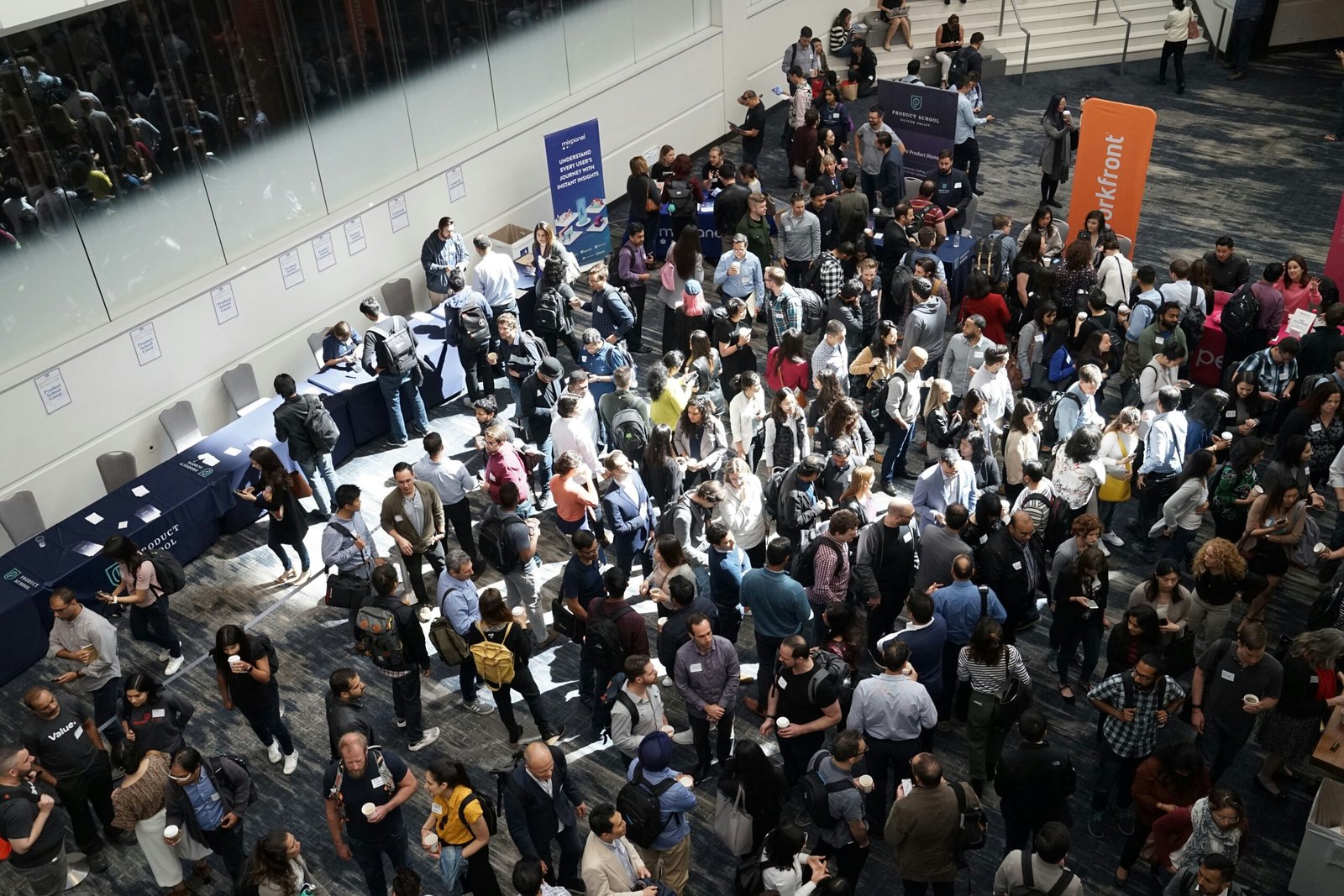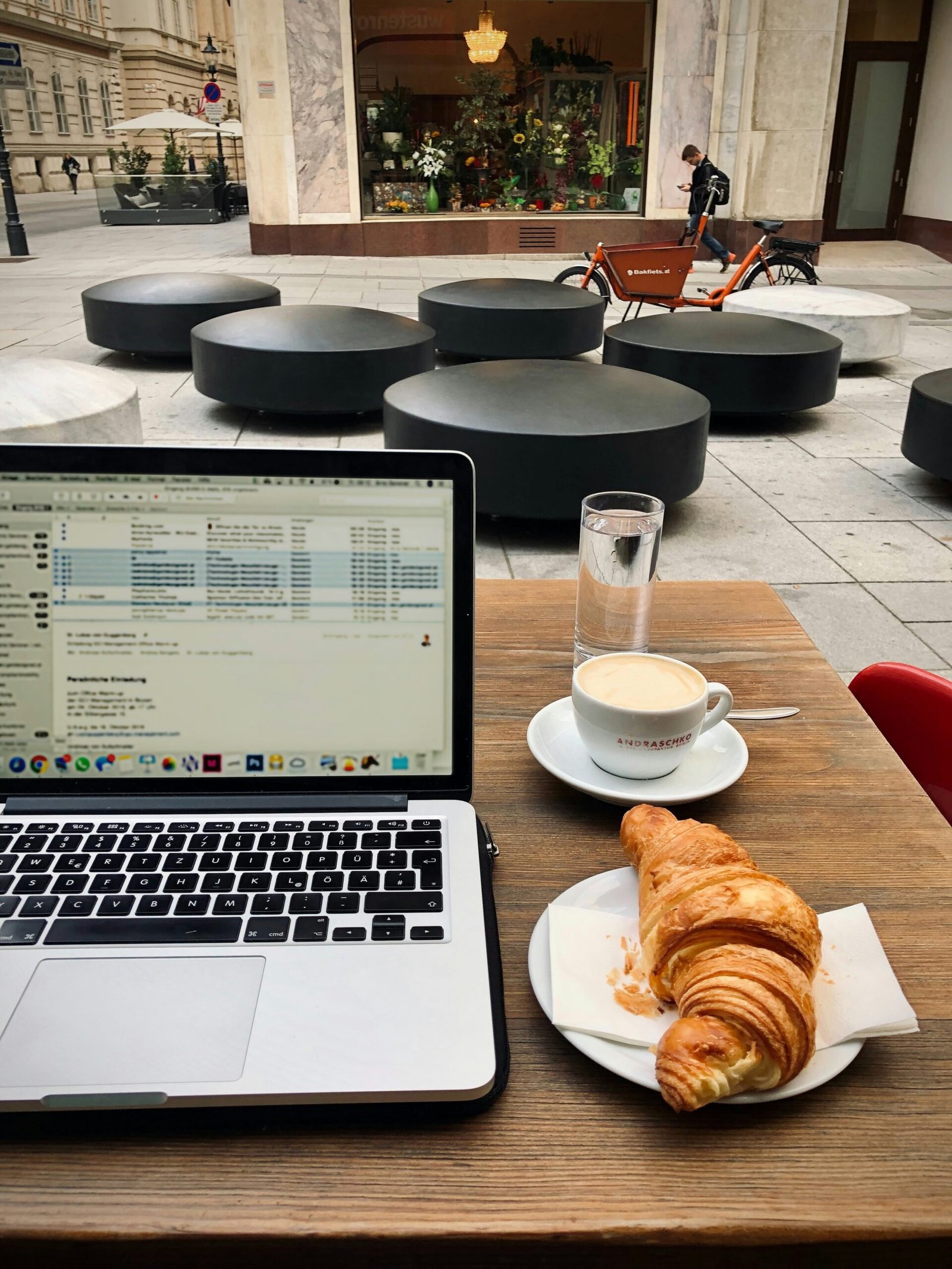Introduction to Conference Networking
Networking at conferences has become an essential activity for professionals across various industries. These events present a unique opportunity to connect with like-minded individuals, share knowledge, and foster valuable partnerships. Whether you are a seasoned attendee or a first-time participant, understanding the importance of networking can significantly enhance your conference experience.
Conferences gather a diverse group of professionals, each bringing their expertise and insights. This congregation creates an environment ripe for exchanging ideas and exploring new perspectives. Effective networking at these events can lead to career advancement by opening doors to new job opportunities, collaborations, and mentorship. It can also result in business opportunities, such as finding potential clients, partners, or investors. Moreover, engaging with peers and industry leaders can provide personal growth, enriching your professional life with new skills and knowledge.
The benefits of networking at conferences extend beyond the immediate event. The relationships you build can evolve into long-term professional connections that support your career trajectory. By interacting with a wide range of individuals, you gain exposure to different approaches and solutions, which can inspire innovation and enhance your own work. Networking also helps in staying updated with industry trends, emerging technologies, and best practices, ensuring that you remain competitive in your field.
In essence, conferences are more than just a platform for learning—they are a conduit for building a robust professional network. By making the most of these opportunities, you can significantly impact your career and personal development. As we delve deeper into the best strategies for networking at conferences, it is crucial to remember that the connections you make can serve as a foundation for future success.
Preparing Before the Conference
Effective networking at conferences starts well before you arrive at the event. Proper preparation can significantly enhance your experience and yield better results. The first step is to research the event thoroughly. Understanding the conference’s theme, agenda, and the list of speakers and attendees can provide valuable insights. Identifying key speakers and influential attendees allows you to target specific individuals you want to connect with.
Setting clear networking goals is another crucial aspect of preparation. Whether you aim to establish new professional relationships, explore potential job opportunities, or gain industry insights, having specific objectives can guide your interactions and maximize the value you derive from the conference. It’s advisable to outline what you hope to achieve and the types of people you want to meet.
One of the most important tools in networking is your elevator pitch. This concise, compelling introduction should effectively communicate who you are, what you do, and what you are looking for. Crafting a polished elevator pitch and practicing it can help you make a strong first impression and engage your audience promptly.
Additionally, bringing business cards is essential. Despite the digital age, business cards remain a tangible and professional way to exchange contact information. Ensure your cards are up-to-date and include all relevant details, such as your phone number, email address, and LinkedIn profile.
Speaking of LinkedIn, maintaining an updated LinkedIn profile is vital. Many conference attendees use LinkedIn to connect before, during, and after the event. Ensure your profile is current, professional, and reflects your latest achievements and skills. A well-crafted LinkedIn profile can support your in-person networking efforts and facilitate ongoing professional relationships.
In summary, meticulous preparation before attending a conference can set the stage for successful networking. By researching the event, identifying key individuals, setting clear goals, preparing an elevator pitch, bringing business cards, and maintaining an updated LinkedIn profile, you position yourself to make meaningful and productive connections.
Making a Positive First Impression
First impressions are pivotal when it comes to networking at conferences. The way you present yourself can set the tone for future interactions and could potentially open up new opportunities. One of the fundamental aspects to consider is your dress code. Dressing appropriately for the occasion not only shows respect for the event but also conveys professionalism. Aim for attire that aligns with the event’s theme, whether it be business formal, business casual, or something more relaxed. Your appearance should reflect the seriousness with which you approach your professional engagements.
Body language is another critical component in making a positive first impression. Non-verbal cues such as eye contact, posture, and facial expressions can speak volumes about your confidence and openness. Maintaining eye contact demonstrates attentiveness and sincerity, while a good posture conveys confidence and receptiveness. Smiling can also go a long way in making you appear approachable and friendly, which can help in breaking the ice during initial interactions.
One often overlooked element is the handshake. A firm handshake can significantly impact the perception of your confidence and professionalism. Make sure your handshake is neither too weak nor too strong, as either extreme can leave a negative impression. A firm, but not overpowering handshake, accompanied by a genuine smile, can set a positive tone for the conversation that follows.
Introducing yourself effectively is equally important. Be concise yet comprehensive when stating your name, role, and the organization you represent. A well-crafted introduction can pique the interest of the person you are meeting and create a foundation for a meaningful conversation. Additionally, engaging in active listening and asking open-ended questions can help sustain the dialogue, making the interaction more memorable and impactful.
In summary, making a positive first impression involves a combination of appropriate dress, confident body language, a firm handshake, and effective self-introduction. These elements collectively contribute to creating a lasting impression that can facilitate successful networking at conferences.
Effective Communication Skills
Effective communication is a fundamental aspect of successful networking, particularly at conferences where first impressions and meaningful interactions are crucial. One of the key components of effective communication is active listening. This involves not just hearing the words another person is speaking but truly understanding the message being conveyed. Active listening can be demonstrated through nodding, maintaining eye contact, and providing feedback that shows comprehension, such as summarizing the speaker’s points or asking clarifying questions.
Another crucial skill is asking open-ended questions. These questions encourage more detailed responses and foster a deeper conversation. Instead of asking questions that can be answered with a simple ‘yes’ or ‘no,’ consider questions that start with ‘how,’ ‘what,’ or ‘why.’ For instance, “What inspired you to attend this conference?” or “How do you see the current trends affecting your industry?” Such questions not only show genuine interest but also open the door to more substantial dialogue.
The art of small talk is another essential element of effective communication at conferences. Small talk serves as the initial step toward building rapport and can often lead to more meaningful discussions. Topics for small talk can range from the conference venue to recent industry developments. The key is to be observant and pick up on cues that can lead to a more engaging conversation.
Being genuinely interested in others is vital for effective communication. People can usually tell when someone is truly interested in what they have to say. Show genuine curiosity about their experiences and perspectives. This not only makes the other person feel valued but also sets the stage for a more rewarding networking experience.
Finding common ground is another strategy to build rapport. Shared interests or experiences can serve as a foundation for a lasting professional relationship. Whether it’s a mutual acquaintance, similar career paths, or a shared hobby, identifying commonalities can make conversations more engaging and memorable.
Leveraging Social Media and Apps
In the digital age, social media and networking apps are indispensable tools for enhancing your networking efforts at conferences. Platforms such as LinkedIn and Twitter, along with conference-specific apps, provide avenues to connect with fellow attendees before, during, and after the event. These tools not only facilitate the exchange of information but also help in building and nurturing professional relationships.
Before the conference, it is crucial to optimize your social media profiles. Ensure that your LinkedIn profile is up-to-date with your latest professional achievements, roles, and a professional photo. Join relevant groups and engage in discussions related to the conference topics. This will help you become more visible to other attendees and speakers who might share similar interests. Similarly, follow the event and its hashtags on Twitter to stay informed about pre-conference activities and discussions.
During the conference, social media can be an excellent way to engage with both speakers and attendees. Live-tweeting sessions using the event hashtag can help you join broader conversations and increase your visibility within the conference community. Additionally, participating in Twitter chats or LinkedIn discussions related to the conference themes can provide a platform to share your insights and connect with like-minded professionals.
Conference-specific apps are also a valuable resource. These apps often include features such as attendee lists, messaging systems, and schedules that can help you plan your networking strategy more effectively. Use the app to set up meetings with other attendees, send messages, and keep track of key sessions you want to attend. Make sure to take advantage of any networking features the app offers, such as virtual business card exchanges or matchmaking algorithms that suggest potential connections based on shared interests.
After the conference, follow up with the connections you made by sending personalized messages on LinkedIn or Twitter. Mention specific points of discussion or shared interests to reinforce the connection. Consistently engaging with your new contacts on social media can help transform initial connections into long-term professional relationships.
Attending Workshops and Breakout Sessions
Workshops and breakout sessions at conferences present a prime opportunity for networking. These smaller, focused gatherings allow attendees to connect with individuals who share similar professional interests and goals. Choosing the right sessions to attend is crucial for optimizing networking potential. It is advisable to review the conference agenda in advance, identifying sessions that align with your interests and professional objectives.
When selecting workshops or breakout sessions, consider the expertise of the speakers and the topics being covered. Sessions led by prominent figures in your field can provide valuable insights and learning opportunities. Furthermore, attending sessions on niche topics relevant to your work can help you meet like-minded professionals. This strategic approach ensures that you are in the right place to make meaningful connections.
Active participation during the sessions is equally important. Engage with the content by asking questions and contributing to discussions. This not only demonstrates your interest and expertise but also makes you more visible to both the speakers and other attendees. Taking notes and reflecting on the key points discussed can also facilitate post-session interactions.
After the session, approach the speakers and fellow attendees to introduce yourself. Complimenting the speaker on their presentation or asking follow-up questions can serve as natural conversation starters. For fellow participants, finding common ground based on the session content can help build rapport. Exchanging business cards and connecting on professional networking platforms like LinkedIn can also be effective in maintaining the relationships formed during these sessions.
By strategically choosing and actively participating in workshops and breakout sessions, you can maximize your networking opportunities at conferences. These engagements not only provide valuable learning experiences but also lay the foundation for meaningful professional connections.
Follow-Up Strategies Post-Conference
Following up after a conference is a pivotal step in cementing the connections made during the event. The timing of these follow-ups is critical; ideally, you should aim to reach out within 24 to 48 hours post-conference while your interaction is still fresh in the minds of the people you met. This promptness not only shows your eagerness but also helps to keep the conversation going.
When crafting your follow-up messages, it’s essential to be concise yet meaningful. Start by reminding the recipient of your meeting context—mentioning specific details you discussed can make your message more memorable. Express your appreciation for the interaction and, if applicable, suggest a clear call to action. Whether it’s a proposal for a future meeting, sharing a relevant article, or just keeping the lines of communication open, making your intentions clear can facilitate a smoother continuation of the relationship.
Personalization is key in follow-up communications. A generic message is easily overlooked, whereas a personalized note can stand out. Use the individual’s name, reference specific topics you discussed, and tailor your message to resonate with their interests or professional needs. This approach not only demonstrates your attentiveness but also builds a stronger, more personal connection.
Leveraging social media can greatly enhance your follow-up efforts. Platforms like LinkedIn are particularly useful for maintaining professional relationships. Connect with the individuals you met, and consider following up with a personalized message through these platforms. Engaging with their posts and sharing relevant content can keep you on their radar and reinforce the connection established at the conference.
Maintaining these relationships over time requires consistent, thoughtful engagement. Regular check-ins, sharing valuable information, and showing genuine interest in their endeavors can foster a long-term professional relationship. Effective follow-up strategies are not just about immediate post-conference actions but also about building and nurturing a network that can yield mutual benefits in the long run.
Overcoming Networking Challenges
Networking at conferences can present various challenges, especially for individuals who may experience social anxiety or feel overwhelmed in large gatherings. However, with the right strategies, these obstacles can be managed effectively, allowing you to capitalize on the numerous opportunities that conferences offer.
For introverts, networking can be particularly daunting. One effective approach is to set specific, manageable goals before the event. For example, aim to have meaningful conversations with a set number of people each day, rather than trying to meet everyone. This can make the task feel less overwhelming and more achievable. Additionally, consider arriving early to sessions or social events. Smaller crowds can provide a more comfortable environment to start engaging in conversations.
Managing large crowds involves strategic planning. Identify key sessions, workshops, and networking events that align with your interests and objectives. By prioritizing these activities, you can avoid feeling swamped by the sheer volume of options. Making use of conference apps or agendas can help you stay organized and focused. These tools often allow you to schedule reminders, take notes, and even connect with other attendees, ensuring you make the most of your time.
Staying organized is crucial for effective networking. Keep track of the contacts you make by taking notes immediately after conversations. Record key points discussed and follow-up actions required. Digital tools like contact management apps or even a simple spreadsheet can facilitate this process. Furthermore, prepare and practice a concise personal introduction, which will help you confidently present yourself and your objectives.
Stepping out of your comfort zone is essential for personal and professional growth. While it may be challenging initially, the long-term benefits of networking are substantial. Building a diverse professional network can lead to new opportunities, collaborations, and insights. Remember that many people at conferences are also looking to connect, so your efforts to reach out are often welcomed and appreciated.





